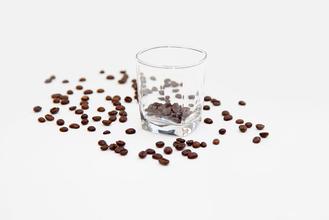Coffee is divided into Arabica and Robusta.
There are also many varieties of coffee. First of all, the two most common varieties are Arabica and Robusta! The coffee beans on the market, unless there is coffee specially grown by Robusta, no matter what name you encounter, such as Yega Sheffield, Mantenin, Columbia, etc., all belong to the subline or native varieties under the Arabica variety. 2. Arabica is generally more expensive than other coffee beans. 3. Under different planting conditions, it is best to grow at high altitude, with lower temperature and lower yield. It has a stronger taste, elegant mellow and acidity; about 1% caffeine (by weight) is expensive: other coffee beans are usually grown at lower elevations and higher temperatures, resulting in higher yields. Arabica coffee grows best with a lighter taste, about 2% caffeine, a lower price and less production. Arabica coffee has a much more refined flavor than other coffee, and its caffeine content accounts for only 1% of the total weight of coffee.
The author believes that Arabica coffee and Robusta coffee can not be directly compared, after all, they belong to different tree species, each has different opportunities to show their talents! Just like beef cattle and cows, which side of the milk quality can be compared? Which side of the beef is of good quality?
Even all-Arabica coffee beans are not necessarily good coffee beans, even if more than half of the robusta coffee beans (refined beans) may be good coffee! Blending itself is to carry forward the espresso, but it is contemptible to mix it in a single cup of coffee.
The above are personal views, if there are differences, please add correction, thanks to the strong adaptability of robusta coffee, easy to grow, fast growth, high yield, the general raw bean treatment is more extensive and low quality (there is also a small amount of refined Robsta for washing). Robusta coffee has a round and rugged shape, relatively small grains, mixed beans, bright and strong flavor, mainly bitter taste, and has a bad rubber taste or mildew smell because of its low level of raw bean treatment. most Robusta beans are not suitable for drinking as a single coffee, and a few Robusta beans are used as Italian ingredients. The proportion is very low (but it does not rule out the fact that very few high-quality Robbosa beans can reach more than half of them). In general, robusta coffee is used in instant coffee (which extracts about twice as much liquid as Arabica), canned coffee, liquid coffee and other industrial coffees. Its caffeine content is much higher than Arabica species, about 3.2% Arabica coffee cultivation conditions are harsh, disease resistance is weak, altitude requirements are higher, growth is slower, quality is higher, and raw bean processing is more refined. Arabica coffee beans are elegant and slender in shape, with large and uniform grains. Different producing areas have their own different flavor and aroma, rich taste and different taste. It makes it the only coffee among these native species that can be drunk directly and alone, and can be used as a single product or as an Italian blend.

Important Notice :
前街咖啡 FrontStreet Coffee has moved to new addredd:
FrontStreet Coffee Address: 315,Donghua East Road,GuangZhou
Tel:020 38364473
- Prev

Burundian Robkasta Coffee Bean Flavor description Taste quality characteristics Manor Grinding scale introduction
Burundian robucasta coffee beans flavor description taste quality characteristics manor grinding scale introduces neutral taste Brazil, El Salvador, lowland Costa Rica, Venezuela, Honduras, Cuba. Mellow Colombian metenin, Mocha, Blue Mountains, Guatemala, Costa Rica. Generally speaking, sour coffee beans, especially high-quality new beans, are mostly roasted.
- Next

Introduction to the planting Base Map of Bourbon Rivida Bean location conditions of Hillado Coffee Bean in Brazil
Brazil Hilado Coffee Bean Bourbon Rivida planting Base Map introduces that coffee was introduced into Brazil after the 18th century. In 1727, coffee was introduced into Port Belem, Brazil from Guyana, and has since settled in Brazil. It is mainly distributed in the southeast coastal areas of Brazil, namely, Sao Paulo, Parana, San Esprito and Minas Gerais. From the end of the 18th century to
Related
- Detailed explanation of Jadeite planting Land in Panamanian Jadeite Manor introduction to the grading system of Jadeite competitive bidding, Red bid, Green bid and Rose Summer
- Story of Coffee planting in Brenka region of Costa Rica Stonehenge Manor anaerobic heavy honey treatment of flavor mouth
- What's on the barrel of Blue Mountain Coffee beans?
- Can American coffee also pull flowers? How to use hot American style to pull out a good-looking pattern?
- Can you make a cold extract with coffee beans? What is the right proportion for cold-extracted coffee formula?
- Indonesian PWN Gold Mandrine Coffee Origin Features Flavor How to Chong? Mandolin coffee is American.
- A brief introduction to the flavor characteristics of Brazilian yellow bourbon coffee beans
- What is the effect of different water quality on the flavor of cold-extracted coffee? What kind of water is best for brewing coffee?
- Why do you think of Rose Summer whenever you mention Panamanian coffee?
- Introduction to the characteristics of authentic blue mountain coffee bean producing areas? What is the CIB Coffee Authority in Jamaica?

